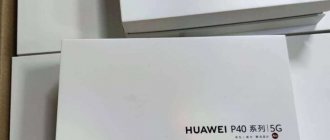IMPORTANT: Android device and terminology
Any Android-based operating system consists of a number of components:
- bootloader (recovery) - analogous to BIOS in desktop PCs,
- the kernel is the operating system itself without drivers and utilities,
- drivers - everything you need to work with hardware,
- a set of basic utilities - necessary for making calls, sending SMS and other usual actions (can be combined with the launcher into one package),
- “launcher” is a visual shell that determines the appearance and logic of working with the interface,
- pre-installed programs - everything you need beyond basic phone operations, even a browser and calculator
Let us assume in a conditionally simplified manner that “pure” Android AOSP is a compilation of the kernel, drivers, basic utilities and the stock Google graphical interface.
In order to write this set to the smartphone’s storage and run it, you need a bootloader-recovery. Moreover, different versions of Android may have different recovery options.
Recovery can be standard (developed by Google), proprietary (from the smartphone developer company) or third-party (developed by enthusiasts).
It can be changed provided the different options are compatible (about the same as the BIOS of motherboards).
Be careful! Contact only trusted workshops!
By using the services of unqualified specialists, you risk it! For example, you want to update your device and still keep your data, photos, and contacts. An inexperienced person will reset the data and install a new, clean system without saving the data.
As a result, the data disappears and cannot be recovered. There are dozens of similar situations and cases. Android is a flexible operating system, with many settings, installation options, resets and erases. Only a diligent person with a lot of free time can understand them.
By studying the issue yourself, you will spend a lot of time and effort re-reading hundreds of pages of forums and still risk making a fatal mistake by installing the wrong version of the software and ruining your phone. Do the smart thing and come to the Xiaomi firmware service. We will quickly fix the gadget and provide a guarantee.
MIUI: Xiaomi's proprietary operating system
Officially, Xiaomi smartphones come pre-installed with MIUI (MI User Interface, pronounced “Me You I”), a proprietary OS.
It contains the official Android kernel from Google, one of the most recent versions, but with a slight delay, since it is seriously different from AOSP.
The system has its own built-in graphical interface, an application store, a set of basic applications and its own utilities.
From the appearance to the calculator, everything in MIUI belongs to Xiaomi.
Sales of smartphones in different markets have led to the emergence of several versions of MIUI.
What types of firmware are there: official
MIUI exists in various regional and versions, which can be distinguished by the inscription on the box:
- international ( Global /PFAMIXM) is used for all smartphones sold (with the exception of offline sales in Europe and Russia) outside China and includes all language packs available in basic Android;
- Russian ( RU /PFARUXM, global version) can only be found on smartphones from official retail, and is distinguished by the presence of applications from local developers;
- European ( EU /PFAEUXM) devices are equipped for retail sale in the EU; it differs from RU only in the absence of applications from Russian developers;
- “Chinese” ( China /PFACNXM) is intended for use in smartphones sold only in the Middle Kingdom and supports only Chinese and English languages;
- “Vietnamese” ( China / PFACNXM) is a homemade version of Chinese firmware with translation from local craftsmen, used to sell Chinese smartphones abroad.
Before Mi 6, Xiaomi smartphones used the same bootloader for China and Global smartphones. More recent models use their own incompatible bootloaders for each region.
IMPORTANT: some Xiaomi smartphone models (such as Mi 5X/A1, Mi Max 3, Mi Play) can use not only regional, but also party versions of the bootloader that are incompatible with each other.
Installing an OS version that is not optimized for a specific bootloader leads to “bootloops” (endless reboots) and “bricks” (the smartphone cannot boot).
International and Chinese firmware are supplied in 2 versions: weekly beta (Global/China Developer ) and stable (Global/China Stable ).
Stable is updated as the version is finalized and changes are tested to a proven stable state.
Weekly offers fresh features continuously until the official release.
What types of firmware are there: unofficial MIUI
Since Xiaomi traditionally opens the source code of firmware for its smartphones, powerful communities of third-party developers were formed even at an early stage of the company's development.
They are actively creating their own firmware, including for those device models whose sales on the international market were not planned (for example, Redmi Pro, Mi 5X, Mi 6X, Redmi K20, Redmi K20 Pro).
Among the most significant, their own versions not only exist for each Xiaomi model, but can also be updated over the air (at least once a month):
- Xiaomi.EU - appear earlier than others, in some devices they are “raw”;
- MiRoom - stable firmware with a slight delay;
- MiuiPro - the most developed options, distributed for a fee.
Any of them is a complete analogue of the official system and can be recommended for permanent use.
What is it and why do you need TWRP
In general, this is an abbreviation, and it stands for team Win Recovery Project, thereby saying what the project is: a modified recovery that allows you to do much more than factory utilities. First of all, it is installed by those who want to install custom firmware on their device, which is why the purpose of TWRP is appropriate: a complete backup of the system, installation of software, firmware, kernels, full wipes and a bunch of everything that “stock” (factory) hides from the user. menu.
With Xiaomi, the situation is standard: the basic recovery is not suitable for installing custom firmware, because the first one simply does not allow this, which is why people come to TWRP. In addition to everything previously mentioned, Team Win can completely restore the firmware from a recovery file. So, this is an excellent tool for those who like to play it safe: even if the smartphone “dies” after changing the firmware, it can be “revived” without any problems.
In addition to this killer feature, TWRP can provide full-fledged work with device files, creating partitions in memory, approximately like on the HDD of your desktop, connecting to a PC in flash card mode, while starting the system will not be required. It’s very convenient, for example, the wipes have already been made, but no one has transferred the firmware to the storage device, which has happened to your humble servant more than once.
How to determine the type of installed firmware
Smartphone identification is carried out in several steps.
1. It is necessary to clarify on the Internet the appearance of the box for different regions: Xiaomi for China and Europe often have an excellent design and the exact model name. Check the integrity of the film on the box and EMEI (to avoid substitution).
2. The hieroglyphs on the box are only valid for the CN version. All text on the Global and EU versions must be in English, the RU inscriptions are partially or completely in Russian (stickers are acceptable).
3. The sticker on the box determines the general firmware type: Global (takes into account EU/RU) or China.
4. To accurately identify the firmware, you need to go to “Settings” ➞ “About phone” ➞ “MIUI Version”. The firmware number must match one of the numbers on the official website. In some cases, the name includes the line “by xiaomi”.
If the number contains one or more “extra” digits, the firmware is unofficial “Vietnamese”. It is recommended to flash it immediately after receiving the smartphone, because:
a) “flip-flop” is not updated over the air,
b) attempts to modify system files or random firmware will end in a bootloop.
Firmware from third-party developers is designated accordingly, replacing the original MIUI inscription with its own name and details.
Xiaomi smartphone models with a locked bootloader
The loader, or bootloader, performs functions similar to the BIOS of the computer operating system. If system files are damaged, the bootloader allows you to activate the recovery mode and reset the device to factory settings.
Xiaomi firmware with a locked bootloader is required not only if the owner of the smartphone has lost control over it. This operation is very popular among buyers purchasing models released into mass production in the last two years.
The fact is that the manufacturing company has introduced the practice of releasing the latest models with a bootloader lock. This is done to prevent users from installing third-party firmware on the gadget. That's why to install a custom bootloader you need to first unlock it.
For some models (for example, Mi Note and its Pro variation), blocking occurs when installing a global version of the firmware. The latest models (such as Redmi with all its variations, Mi5, Mi Max) are released for sale already blocked.
A separate issue is the situation of loss of control over the device. Older models had the ability to create a new account if you lost your password. Now the company, following the example of market leader Apple, has taken stricter measures to protect user confidential information.
In accordance with the new rules, the phone is supposed to be blocked if the password is repeatedly entered incorrectly. If the owner himself has forgotten the password, he will have to go through the unlocking procedure.
How can you find out if the device's bootloader is locked? You need to turn it off, then simultaneously press the power and volume up keys. This puts the smartphone into recovery mode. The bootloader is blocked by a black screen with a schematic image of the phone connected to a USB cable.
Flashing Chinese Xiaomi into Russian
If a newly purchased Xiaomi can only boast of having English and Chinese in the settings, you will have to work a little harder. First, you will need to install the official Dev version of the firmware (not necessary for some devices, but recommended).
Installing the official Developer version of MIUI
To flash the official version of the firmware, just go to “Settings”.
Official firmware can be divided into Recovery (for installation through the update menu or the TWRP bootloader) and FastBoot (for installation from a PC/laptop in “Fastboot” mode).
Switching to Fastboot mode is the same for all Android smartphones: turn it off, hold down the power and volume down buttons, after vibration, release the power button and wait for the proprietary screensaver to appear.
Within the same regional firmware type, all Xiaomi smartphones are flashed using Recovery firmware from the official website.
We choose and wait
1. Download the firmware to your smartphone.
2. “Settings” ➞ “System update” ➞ click on the 3 dots ➞ “System update”.
Direct transition between regional versions of Global/China/RU/EU is only possible using third-party tools.
For a number of smartphones, you will need to change the bootloader to a third-party one (TWRP).
Transition from “Vietnamese” firmware
1. Download and install Chinese Mi PC Suite .
Downloaded
2. During installation it will ask you to install drivers.
3. Launch Mi PC Suite , select the firmware update mode, Recovery.
Selected the desired item
4. Turn off the phone. We launch it in Recovery mode (press and hold the power key and volume up). Select the bottom line from the menu.
5. We flash it by selecting the first button twice and waiting for the processes in the window to finish.
Click and wait
After this, you can unlock the bootloader, install TWRP and flash firmware from localizers (unofficial MIUI firmware).
Unlocking the bootloader
In order to flash an unofficial version of MIUI or install custom firmware, you need to unlock the bootloader.
Now unlocking takes place on both weekly (developer) and stable firmware. The procedure is simple:
1. Link your phone to Mi account (log into your account on your phone) and link your personal phone number, using only the mobile Internet.
2. “Settings” ➞ “About phone” ➞ 5 click “MIUI Version”. The developer menu is activated.
Finding out the status of the bootloader
3. “Settings” ➞ “Advanced” ➞ “For Developer”. Enable “Factory unlocking” (OEM unlocking) ➞ “Mi Unlock status” (“Bootloader status”) ➞ “Add an account and device” (“Link device to account”).
IMPORTANT: The “Mi Unlock Status” menu (“bootloader status”) is available on all Dev firmware and many Stable ones. If the menu is missing, you need to install the Dev version. You may need to disable secure login (including PIN or password).
4. Download MiFlashUnlock version 2.0 and older, install ➞ Agree. Log in with your own account.
5. Turn off your smartphone. Press and hold the volume rocker “Down” and the power button until it vibrates and the branded splash screen appears. It will boot in Fastboot mode.
6. Connect your smartphone to your computer, click the “Unlock” button in MiFlashUnlock ➞ Unlock. The operation time should not exceed 30 seconds.
7. The inscription “Binding time is too short, Less than 72/720/1440 hours” or “After XX hours of trying to unlock the device” indicates that everything was done correctly.
Result of successful unlocking
8. Wait for the counter to reset for the specified number of hours. Launch MiFlashUnlock and repeat steps 5-6. If 3 green LEDs light up, the process was successful.
9. Check the unlock status in the “Mi Unlock Status” menu.
Installing custom Recovery (TWRP)
ATTENTION! This section is presented for informational purposes. Use of information is at your own risk. It is recommended to visit the relevant topics on relevant official resources before installing the firmware. It is recommended to perform all manipulations in a Windows . The success of firmware and other manipulations on macOS/other NIX systems is not guaranteed.
1. Download Platform-tools (adb/fastboot), unpack it into an empty folder in the root of the local disk and use a simple name.
2. Download TWRP and unpack its contents into the folder with adb/fastboot files.
3. We switch the smartphone to fastboot mode (turn it off, hold down the power and volume minus buttons, after vibration, release the power button and wait for the proprietary screensaver to appear). Launch adb and connect the smartphone to the PC/laptop.
4. Enter the command fastboot devices (a message of letters and numbers should be displayed).
5. Enter the command fastboot flash recovery twrp.img.
6. Enter the command fastboot boot twrp.img, wait for it to load into TWRT;
7. In the menu that appears, select “Reboot” ➞ “Recovery”, the phone will reboot into TWRP again.
8. Wipe ➞ Format Data (confirm formatting by entering yes) | Reboot ➞ Recovery
Commands clearly
Forceencrypt enhanced encryption and DMVerity (necessary for some firmware, recommended when installing any unofficial ones):
1. Go to TWRP ➞ Advanced/Advanced ➞ item Remove Forceencrypt.
2. Check the boxes “Remove DMVerity” and “Forceencrypt”. Flash again.
IMPORTANT: After installing any Global (RU/EU/MI) firmware for a Chinese smartphone, re-locking the bootloader is prohibited. You can return the lock only on the official CN firmware. Unlocking and installing global firmware on a “Chinese” device results in Google Pay not working.
Firmware in Fastboot mode
Depending on the type of smartphone, the required firmware version may be available only for Recovery or only for Fastboot. The options are completely identical.
1. Download Platform-tools (adb/fastboot), drivers for the required smartphone, unpack it into an empty folder with a simple name in the root of the local disk.
2. Download the firmware, unpack the contents into the folder with the adb/fastboot files.
3. We switch the smartphone to Fastboot mode (turn it off, hold down the power and volume minus buttons, after vibration, release the power button and wait for the proprietary screensaver to appear). Connect to PC/laptop.
4. In the folder with the adb/fastboot files, run flash_all.bat. Do not use when installing official (Global/EEA/Russia) firmware on a Chinese version of a smartphone.
5. We wait for the reboot and disconnect the smartphone.
Alternative option No. 1: use the MiFlash or XiaoMiTool utility for FastBoot firmware or Mi PC Suite for Recovery options.
Firmware update using XiaoMiTool V2 utility. Follow the instructions on the screenshots
Alternative option #2: some Xiaomi can be flashed with the utility TOOL ALL IN ONE in FastBoot mode, following the instructions of the program.
Firmware using the TOOL ALL IN ONE utility. Follow the instructions on the screenshots
Installing firmware in Recovery mode (via TWPR)
1. Download the firmware, check the integrity (hash/MD5) in any available way
2. Install TWRP. We enter it via Fastboot or by holding down the power button + volume up.
3. Wipe ➞ Advanced Wipe ➞ Check the box for System, Dalvik/ART Cache, Cache, Data, Internal Storage ➞ Click Swipe to wipe
4. Wipe ➞ Data ➞ Yes. Reboot TWRP.
4. Go to the Reboot ➞ Recovery section
5. Connect the smartphone to the PC ➞ Mount ➞ Write the firmware to the smartphone’s memory (or connect an OTG device).
6. Copy the firmware to the root of the USB Flash and connect via OTG cable. Or we connect the smartphone to the PC/laptop, copy it to the root of the internal memory (for easier searching in TWRP) and disconnect the smartphone
7. Install ➞ select the firmware file ➞ Check the Swipe to confirm flash checkbox ➞ Wait for the process to complete.
Installing alternative firmware (Android Go, LinegeOS and others)
To switch from the Chinese version of MIUI (CN) to Android Go for Xiaomi Mi 5X (), Xiaomi Mi 6X () and similar ones, just install custom Reovery (TWRP) and repeat the custom firmware installation procedure.
ATTENTION: Xiaomi smartphones of the same type may have different types that are incompatible with each other. In fact, modifications that differ in internal structure.
In this case, it is necessary to use firmware that strictly corresponds to the required type.
Installing the wrong firmware will result in an irreversible software “brick” .
Restoration will require disassembling the device.
Types of firmware for Xiaomi smartphones
Before you figure out how to flash a Xiaomi device with a locked bootloader, you need to study what kind of Xiaomi firmware there are and what limitations their different types have. They can be divided into two categories:
- Official (or global) firmware versions directly from the manufacturer. There are two of them. The first is the “stable” version, which is recommended for ordinary users, especially if the mobile phone is malfunctioning or reboots spontaneously. It is also suitable if the phone has a bug known as bootloop - the word Mi appears on the screen. The second version is intended for software developers, equipped with the most current functions, but the user working with it is not immune from failures. It is released so that users can test the implemented functionality. However, there are models for which official firmware is not provided - for example, the popular Mi4c. If the user plans to reflash such a model, he should refer to the firmware from the next category.
- Custom firmware is an unofficial version, equipped with additional options and tailored for consumers from different countries (in particular, there are Russified custom ones). This modification can only be installed on a device whose bootloader is unlocked. If a user wants to customize a locked gadget, he will have to first perform the unlock operation.
Is it worth buying Xiaomi in China?
Despite the apparently voluminous instructions, the process of flashing the Chinese Xiaomi firmware takes (after unlocking the bootloader) no more than half an hour. And another hour of preparation.
Unfortunately, macOS requires increased attention during the firmware process, so it is not recommended for Russifying devices.
Another thing is that buying the CN version of a smartphone most often does not make sense: Global variants appear a month after CN . Xiaomi smartphones not intended for the international market almost always have an international modification under a different name.
Smartphones for India, Singapore, Taiwan and Malaysia come with Global firmware and do not require complex firmware manipulations.
The main recommendation: always buy Xiaomi with the Global on the box, which can be found in any online store (the same Gearbest and Banggood sell only official Global smartphones in order to avoid possible blocking of devices at the software level.).
And you don't need to flash anything.
( 25 votes, overall rating: 4.44 out of 5)










